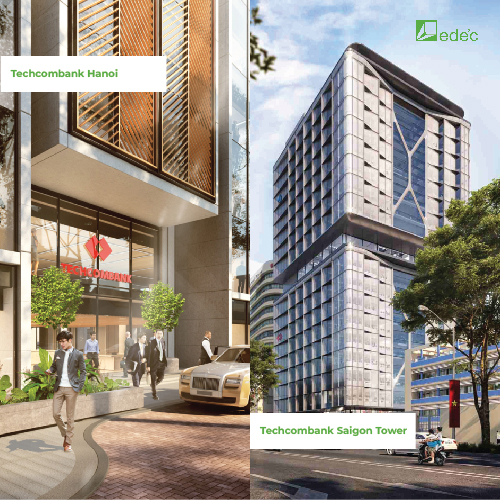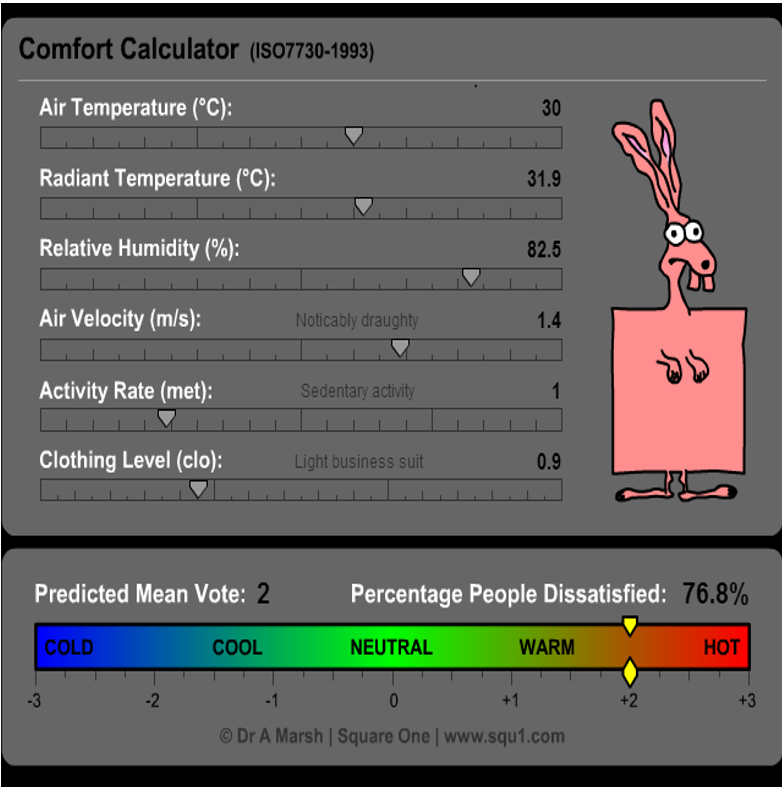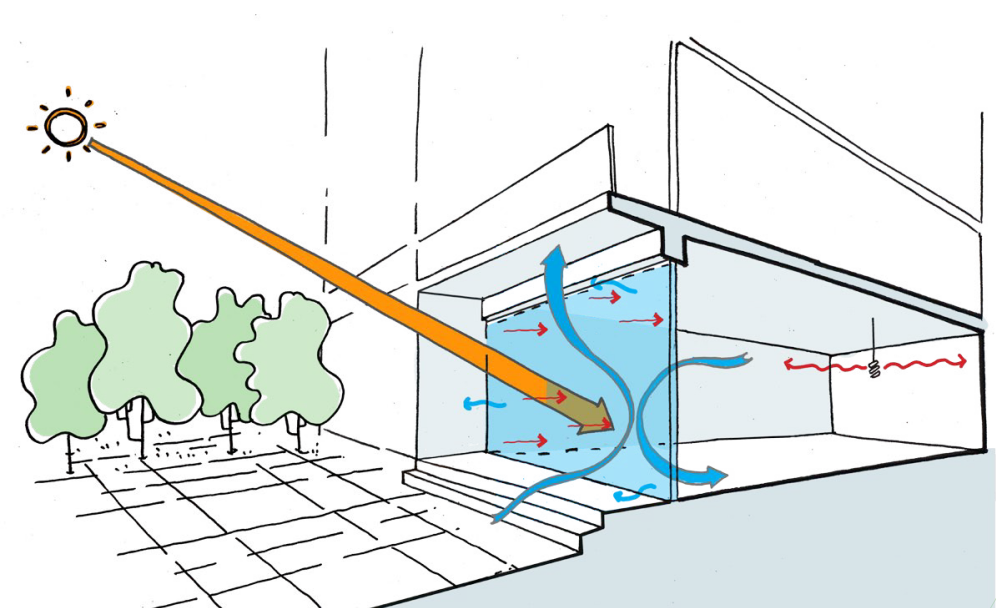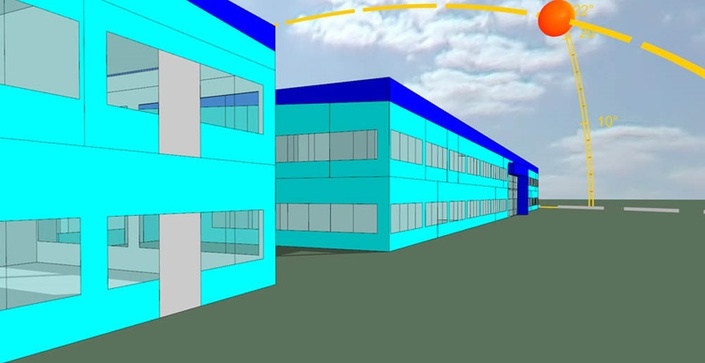RESOURCES
Top world-famous Green Buildings with LEED standard

LEED (Leadership in Energy and Environmental Design) is known as a pioneering international standard on the issue of building energy-saving buildings and protecting the human living environment. This certification is issued by the US Green Building Council and was born in 1995 in the US and is one of the most popular certifications in the world.
Are you curious what are the world-famous green buildings that meet LEED standards? Please follow the content below!
Shanghai Tower, China
- Year of completion: 2015
- Building type: Mixed-use high-rise building
- Size: 576,000 m2
- Rating system: Obtained China’s 3-star green building certification & LEED platinum certification (USA)
- Design unit: Gensler
The roof of this building has a wind turbine installed to provide energy for the exterior lighting and the parking lot. At the same time, the building is also designed to be covered with 2 layers of transparent glass to take advantage of natural daylight, combined with the use of a smart controller for everything in the building from heating, to ventilation, which helps reduce the energy consumption.

Outside view of Shanghai Tower – LEED green building

Details inside Shanghai Tower
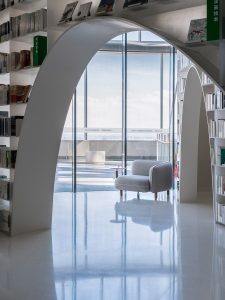
A bookstore inside the Shanghai Tower
According to the design unit’s estimation, the light control alone saves $556,000 (equivalent to nearly 12.7 billion VND) per year. Meanwhile, other sustainable features help reduce 34,000 tons of carbon emissions from the building each year. Thanks to its sustainable design, Shanghai Tower has become a green building with LEED platinum certification – the highest level of certification in the LEED system and became the world-famous Green Building to open this list.
Taipei Financial Center (Taipei 101), Taiwan
- Year of completion: 2004
- Building type: Mixed-use, Office, Retail
- Area: 374,336m2
- Evaluation system: Green building certification LEED-EBOM Platinum
- Design unit: C.Y. Lee and associates
The building is designed and built solidly to resist earthquakes and storms. At the same time, it is also an energy-saving building with a reduction of 33.41 million kWh, which saves operating costs of more than 2 million USD per year (equivalent to 45.6 billion VND).

Taipei Financial Center from above – World famous green building with LEED standard
Manitoba Hydro Place, Canada
-
- Year of completion: 2009
- Building type: Office, Tower
- Area: 64,590m2
- Evaluation system: LEED Platinum Green Building Certification
- Design unit: KPMB Architects
The work is designed with two towers connecting to the north and opening to the south. Design the work with an area of 3 spaces connecting 6 floors with the garden, forming the “lungs” for the whole building. The building also has a 24m high waterfall that helps control the humidity of the air entering the interior depending on the different seasons.
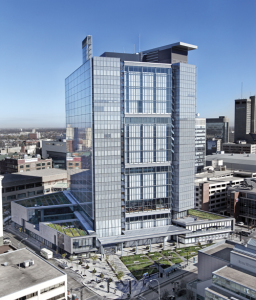
Outside view of Manitoba Hydro Place
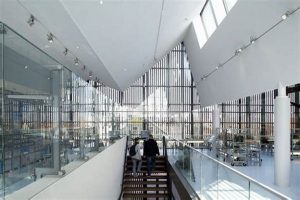

View of the skylight at the green building Manitoba Hydro Place
Bank of America, New York
- Year of completion: 2010
- Building type: Commercial skyscraper
- Size: 205,000 m2
- Rating system: LEED Platinum
- Design unit: Cook + Fox Architects

Green Building “Bank of America”
This project is considered the first high-rise commercial building to achieve LEED platinum and is designed based on the concept of Biophilia. The concept of Biophilia emphasizes the connection of man with nature by making the most of daylight and fresh air. The use of heat-reflecting ceramic partitions and low tempered glass reduces heat absorption in the building.
Read more: LEED certification: top 3 benefit groups
Frick Environmental Center, Pittsburgh
- Year of completion: 2016
- Building type: Education
- Dimensions: 1,446 m2
- Evaluation system: Living Building Certification, LEED Platinum Green Building Certification
- Design unit: Bohlin Cywinski Jackson

Green building scene: Frick Environmental Center
The Frick Environmental Center is an experimental center for environmental education. It is designed around a tight and efficient integrated design process. The project collects rainwater from the roof and reuses the water to achieve the goal of “net-zero waste” within the construction site.
Built as an experiential environmental education center, this sustainable building was designed with an integrated design process. The building design is based on several passive heating and cooling strategies, with the high-performance and insulated exterior walls made from a locally sourced wood that requires no sealants or dyes. The design unit pays great attention to creating a good building envelope and then considers the use of energy-efficient systems.
The Crystal, London, United Kingdom
- Year of completion: 2012
- Building type: Mixed-use, Cultural, educational architecture
- Size: 75,368 ft
- Rating system: BREEAM Outstanding, LEED Platinum
- Design unit: WilkinsonEyre
This world-renowned green building has a crystal-shaped structure and uses six different types of highly insulated glass with varying degrees of transparency to control solar heat gain and minimize energy use. One of the unique features of the building is the corners on the façade, with the outer glass coated with a reflective layer to reduce heat absorption and the inner glass transparent to allow daylight to access the building, saving lighting energy.

The Crystal is one of the famous green buildings in the world that meets LEED standards
Olympic House (IOC headquarter), Lausanne, Switzerland
- Year of completion: 2019
- Building type: Office
- Size: 135,000 sft
- Ranking system: LEED V4 Platinum, SNBS Platinum, Minergie P
- Design unit: 3XN Architects
The world-famous green building Olympic House is a building that clearly shows dynamism and flexibility while ensuring sustainability with features such as: using green roofs and 95% of building materials are reused. and recycled from the old administrative building.


Some pictures of famous green buildings: Olympic House (IOC Headquarters) 3
Suzlon One Earth (Pune, India)
- Opening year: 2009
- Building type: Office
- Certification: LEED Platinum for campus
It is not surprising that the wind energy supplier Suzlon chose to invest and build a leading eco-friendly workplace. Suzlon One Earth was built using only recycled and non-toxic materials and is divided into five interconnected individual buildings named after the elements of nature – Sun, Water, Sky, Trees, and Sea. Suzlon One Earth green building design brings fresh air and natural light to all parts of the campus.
According to MGS Architecture of India, the Suzlon One Earth campus is LEED platinum-certified. The building’s 154 KW of electricity is produced on-site by renewable energy sources (80% wind and 20% photovoltaic). The rest of the energy (4MW) is produced from wind farms. This makes Suzlon One Earth an outstanding energy balance building in India!
Through sustainable practices such as rainwater collection, on-site waste conversion, and ‘garden office’ design to maximize daylight usage, Suzlon One Earth has saved up to 35% in operational costs.
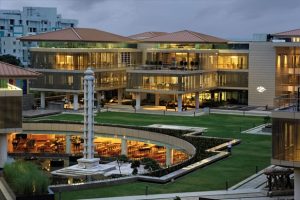

Pictures of Suzlon One Earth green building in India
Torre Reforma (Mexico City)
- Opening year: 2016
- Building type: Office
- Certification: LEED E-BOM Gold hạng
The Torre Reforma (or Reforma Tower in English) is Mexico City’s highest building (246m) and it is a leading symbol of sustainability here.
The building’s shell provides excellent energy efficiency with a reduction of 24% according to ASHRAE. The reduction in energy consumption is due to the structural design of the facade: concrete walls and double-glazed facades allow natural lighting in all office spaces. This benefits the occupants significantly by providing aesthetically pleasing and comfortable interior space for better performance.
This high-performance building has earned LEED® Gold certification for existing structures through a process of continuous improvement, making it one of the most efficient buildings in Latin America after thirteen years of construction. The building’s certification earned a total of 70 points as a result of sustainability strategies implemented throughout its 27 floors. In addition, this structure was also built to withstand a large earthquake. This is an important factor for structures in earthquake-prone cities like the Mexican capital.
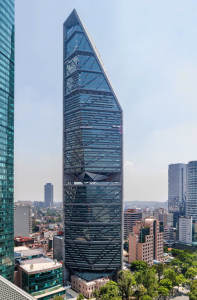
Torre Reforma Green Building in Mexico
Above are the Top famous green buildings in the world that meet LEED standards that have been compiled by EDEEC. We hope this article will provide you with useful and valuable information about green building and LEED green building certification.
Green buildings are not just buildings that “have a lot of trees” but they help to minimize the negative impacts of construction on the environment and society. An “international standard” green building is to optimize energy and water consumption, ensure the highest living comfort for users and reduce operating costs for project investors.

